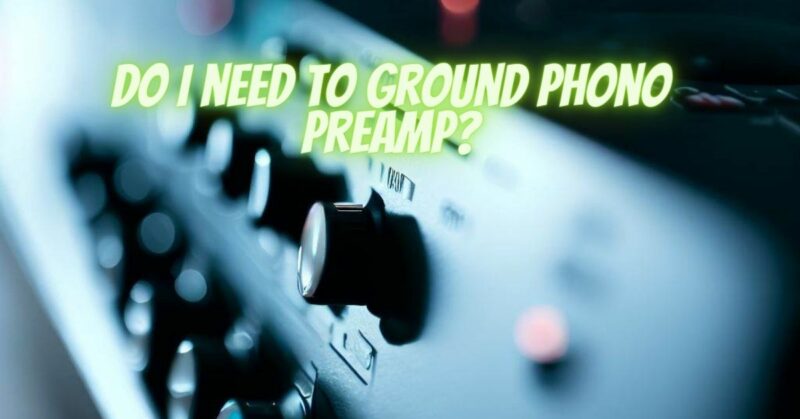In the realm of analog audio, achieving the best possible sound quality from your turntable setup is a priority for audiophiles and music enthusiasts alike. As you venture into the world of vinyl playback, questions about grounding may arise, especially in relation to your phono preamp. In this article, we’ll delve into the concept of grounding a phono preamp, its importance, and whether you need to ground your specific setup.
Understanding Grounding in Phono Preamps:
Grounding a phono preamp involves establishing an electrical connection between the preamp’s chassis or grounding terminal and a stable ground source. This practice is intended to reduce or eliminate unwanted electrical interference and noise that can affect the delicate analog signals processed by the preamp.
Importance of Grounding:
The significance of grounding a phono preamp lies in its role in maintaining a clean and accurate signal path. Turntables generate small electrical signals through the stylus tracking the grooves of vinyl records. These signals are susceptible to external electromagnetic interference, which can manifest as hum, buzzing, or other unwanted noise in the audio playback. Grounding provides a pathway for such interference to be directed away from the audio signal, resulting in clearer and more faithful sound reproduction.
When is Grounding a Phono Preamp Necessary?
Grounding a phono preamp is particularly relevant under specific conditions:
- Unshielded Cables: Turntable setups with unshielded or poorly shielded cables are more susceptible to picking up external electromagnetic interference. Grounding helps mitigate the impact of interference on the analog signal.
- High Gain Settings: If your phono preamp has a high gain setting, there’s a higher chance of amplifying any interference present in the signal path. Grounding becomes crucial to reduce the amplification of unwanted noise.
- Hum and Noise Issues: If you encounter persistent hum, buzzing, or noise in the audio output of your setup, improper grounding could be a contributing factor. Grounding can help address these issues and improve the overall listening experience.
Grounding a Phono Preamp:
- Locate the Ground Terminal: Most phono preamps have a designated grounding terminal or post. This terminal is often labeled as “Ground” or “GND.”
- Attach the Ground Wire: Use a grounding wire with an exposed end or a spade connector. Attach one end of the wire to the grounding terminal on the phono preamp.
- Connect to Grounding Point: The other end of the grounding wire should be connected to a reliable grounding point. This could be a grounding post on your amplifier, receiver, or any other device in your audio setup.
Grounding a phono preamp plays a vital role in maintaining the purity of your analog audio signal. While not all setups require grounding, it becomes essential in cases where interference and noise could degrade the audio quality. By grounding your phono preamp, you’re taking a step towards achieving a clearer and more immersive listening experience from your turntable setup. Always consider the specific characteristics of your setup, such as cable quality, gain settings, and any audible issues, when deciding whether grounding is necessary for your phono preamp.

